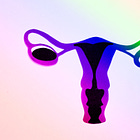A study published Monday in JAMA Pediatrics found that Texas’s terrible anti-abortion law has led directly to a 13 percent increase in infant and newborn deaths. Why? Well, partly because SB8, the “Texas Heartbeat Act” passed in 2021, does not include exceptions for conditions “incompatible with life.”
This follows a 2023 CDC study that found that the infant mortality rate rose by three percent across the United States at large — the first increase since 2001 to 2002 — along with near-endless amounts of other bad news.
So, how has all that forced birth worked out?
Via JAMA Pediatrics:
Between 2018 and 2022, there were 102 ,391 infant deaths in the US, with 10, 351 of these deaths occurring in the state of Texas. Between 2021 and 2022, infant deaths in Texas increased from 1985 to 2240, or 255 additional deaths. This corresponds to a 12.9% increase, whereas the rest of the US experienced a comparatively lower 1.8% increase. […] Descriptive statistics by cause of death showed that infant deaths attributable to congenital anomalies in 2022 increased more for Texas (22.9% increase) but not the rest of the US (3.1% decrease).
This study found that Texas’ 2021 ban on abortion in early pregnancy was associated with unexpected increases in infant and neonatal deaths in Texas between 2021 and 2022. Congenital anomalies, which are the leading cause of infant death, also increased in Texas but not the rest of the US. Although replication and further analyses are needed to understand the mechanisms behind these findings, the results suggest that restrictive abortion policies may have important unintended consequences in terms of trauma to families and medical cost as a result of increases in infant mortality.
I don’t know if those are “unintended consequences” so much as “easily foreseeable consequences that no one who passed this law gave a crap about.” I mean, let’s be real — if they gave a flying crap about life, they wouldn’t oppose socialized healthcare, now would they?
As much as we might love to think that people will see this information and realize that is a terrible thing to do to people, maybe they will change their minds, it seems unlikely. This is not something that is going to hit a nerve with too many of the anti-abortion rights people or make them question anything — at least not until it happens to one of them.
Here, allow Kaylee Griswold, a clearly despicable human being at The Federalist, to exemplify this cruelty, using the example of Kate Cox, whom she described as a woman who “killed her unborn baby for the crime of being imperfect.” Take it away, Kaylee!
Cox’s poor child had received a prenatal diagnosis of Trisomy 18, which is associated with growth obstacles and developmental delays. But while some babies with this diagnosis die in utero or within the weeks or months after birth, others thrive for years, even into their teens and twenties.
Cox’s child could have been one of these success stories, but we’ll never know. […]
HOLD UP. Trisomy 18, also known as Edwards Syndrome, is not simply “associated with growth obstacles and developmental delays.” It is associated with death. It’s not “Some children,” it is the vast majority of children who will die within two weeks of being born. Ninety percent die within the first year. Kaylee Griswold is being shockingly dishonest.
Those who do live for more than a year after birth have what is called “mosaic Trisomy 18” meaning that their symptoms are more mild because only some of their cells have an extra chromosome 18, rather than all of them.
This applies to only to about 1-in-20 infants born with Edwards Syndrome, and, yes, it can be diagnosed in utero. So we actually do know if Cox’s child would have been “one of those success stories” and it would not have been. It’s not a crapshoot, it’s not a mystery, it’s not a miracle, it’s science.
But go off!
The study also shows a better path — one that honors the dignity of both the mother and child. It’s called perinatal hospice, or perinatal palliative care, and it seeks care and comfort for parents and their children from the moment of diagnosis through delivery and eventual death. It provides everything from emotional support and counseling to planning for birth and natural death, funerals and burial plans, prayer, support groups, pictures or mementos, and sometimes sonograms or memorial services.
The study she cites, mind you, was conducted by known hate group the Family Research Council — and regardless of emotional trauma, it does not include anything about how much this would actually cost.
That being said, if that is what people want and they can afford it, they should absolutely do that. Everyone should do what’s right for them, because this is an extremely personal decision.
Birth defects are not the only reason the infant mortality rate is likely to increase in states with abortion bans. OB-GYNs have fled from these states, most of which already have OB-GYN shortages to begin with and doctor shortages in general. Medical students have specifically avoided coming to these states to do their residencies. Labor and delivery units have closed.
It’s just not going to end well. In fact, it already isn’t.
PREVIOUSLY:







